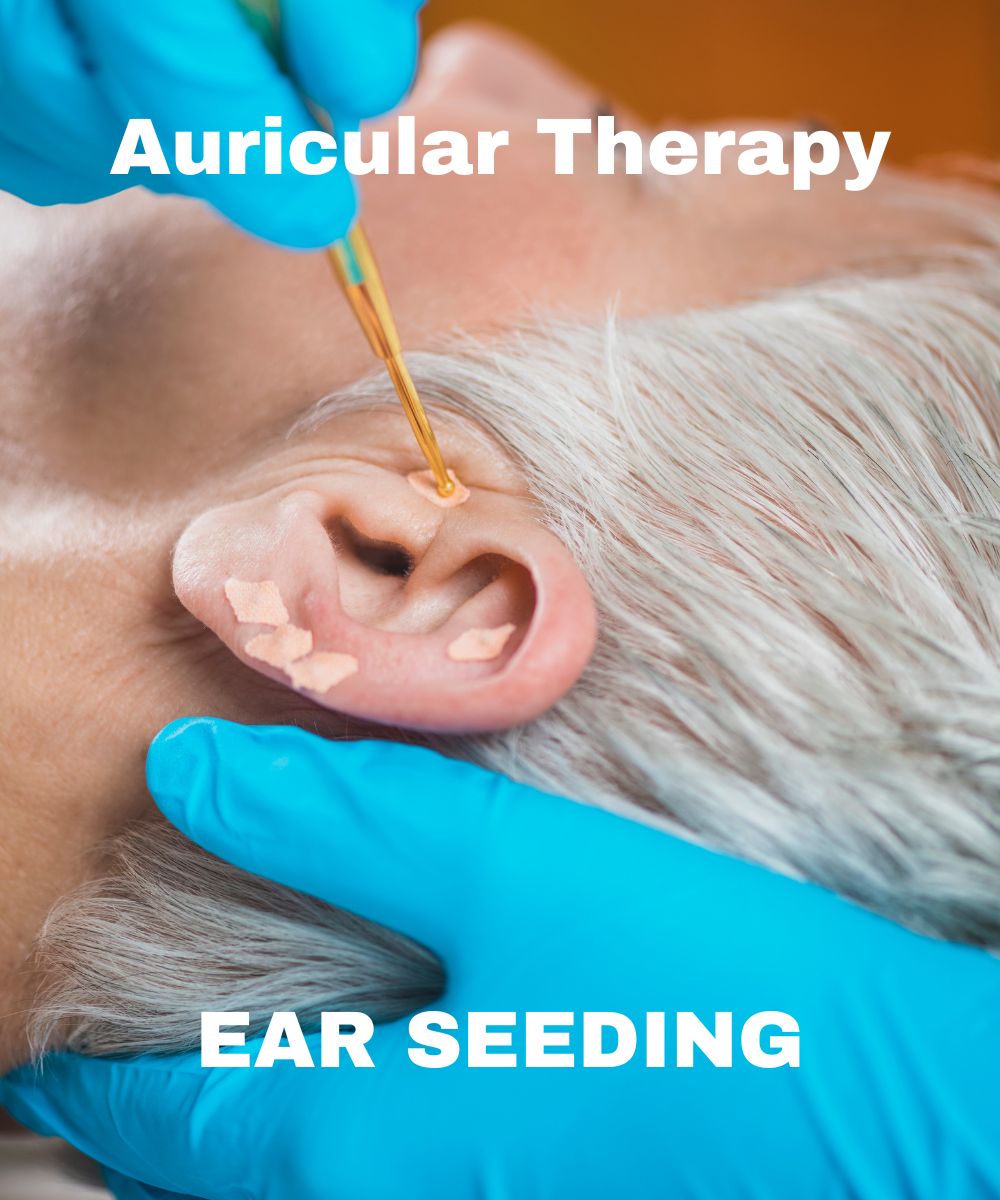
It’s all over social media at the moment. As well as being a lovely and relaxing treatment to receive, it’s also gaining in popularity due to viral videos and people raving about it. Although it’s often thought of as a modern acupressure treatment, it’s actually been performed for thousands of years, and is as old as indian head massage. Ear seeding is said to be a form of traditional Chinese medicine that can help with reducing chronic pain, reduce stress, and other benefits.

Pain relief for headaches seems to be the main benefit outlined on social media channels, however aiding restful sleep, focus and other benefits are on the holistic side of wellness, and follow the same pattern for aiding the whole well-being and relaxation processes.
Ear seeding works on the same principle as auricular therapy, however seeding does not involve needles, and works on the pressure points on the external part of the ear.
What is Ear Seeding
There are many different ways of carrying out seeding. Some people use actual seeds, small beads and often make their own with sterile tape and seeds or beads. Most therapists will buy single use rolls or strips of material with the beads or seeds already attached. They will then tape these to the acupressure points on the external portion of the ear.
As with other therapies and treatments, you certainly can buy the products online, however, using a trained ear seeding therapist with acupressure training, will ensure the treatment is used correctly for what you are looking to achieve.
Ear seeding works around the belief of the body as a map of systems, in the same way as reflexology, however instead of focusing on the feet, ear seeding is carried out on the small external ear follows an established map for different organs which correspond to the different pressure points on the ear. The body systems mapped, are reproductive, digestive, respiratory, nervous and more.
Ear Seeding Process
The stickers with seeds or beads are placed along the points on the ear that correspond to the mapped part of the body which is being worked on. The therapist will then massage the little seeds into the pressure points, to help with the area of the body or nervous system being worked on.
This is a non invasive treatment, which can benefit the whole body.
What Ear Seeding Does
Similar to Reflexology, Ear Seeding allows the body to promote its own healing effects. With the combined effect of relaxation, massage of the ear, lymphatic drainage and trust, ear seeding can help increase the brain endorphins, which are known to help with pain and stress.
Carrying out ear seeding at home, without a trained professional, can lead to small cuts, bruises or damage to the ear, however those are not the full picture. At home packs tend to have simply maps, which may not actually work for what you are looking to achieve.
Who Can’t Have Ear Seeding?
Ear seeding is generally said to be safe for everyone over 18, or who feels they can benefit from acupressure techniques. Even at home, this treatment is not suitable for young children, as they tend to wriggle, and seeds/beads might become dislodged and fall into the ear canal.
Risks of Ear Seeding
- Allergy to the adhesive used on the ear seeding patches.
- Allergy to the seeds/beads used.
- May be unsuitable for those with a latex allergy.
If redness or pain is experienced during treatment, stop and assess for an allergic reaction.
What to Expect in a Treatment
- Your consultation will determine the treatment you will have, and the types of seeds/beads used.
- Your ears will be cleansed and dried.
- Using the correct pressure points on the ear, your therapist will apply the he ear, your therapist will apply the seeds to your ears.
- Your ear will be massaged and you will receive appropriate aftercare.
- Some therapists will ask you to keep the seeds on your ears for a few days, and give you apporpirate aftercare for their use and removal.
How you may Feel After a Treatment
- Happy or sad – an emotional reaction.
- Calm and in control.





